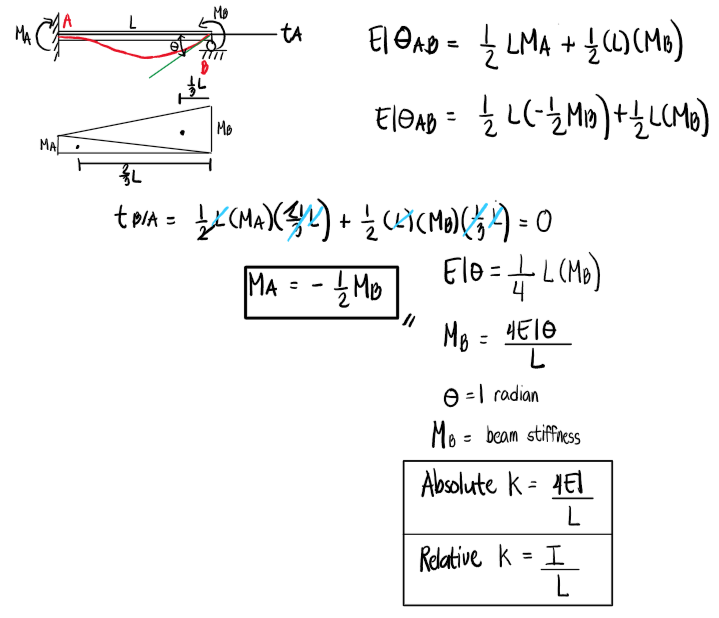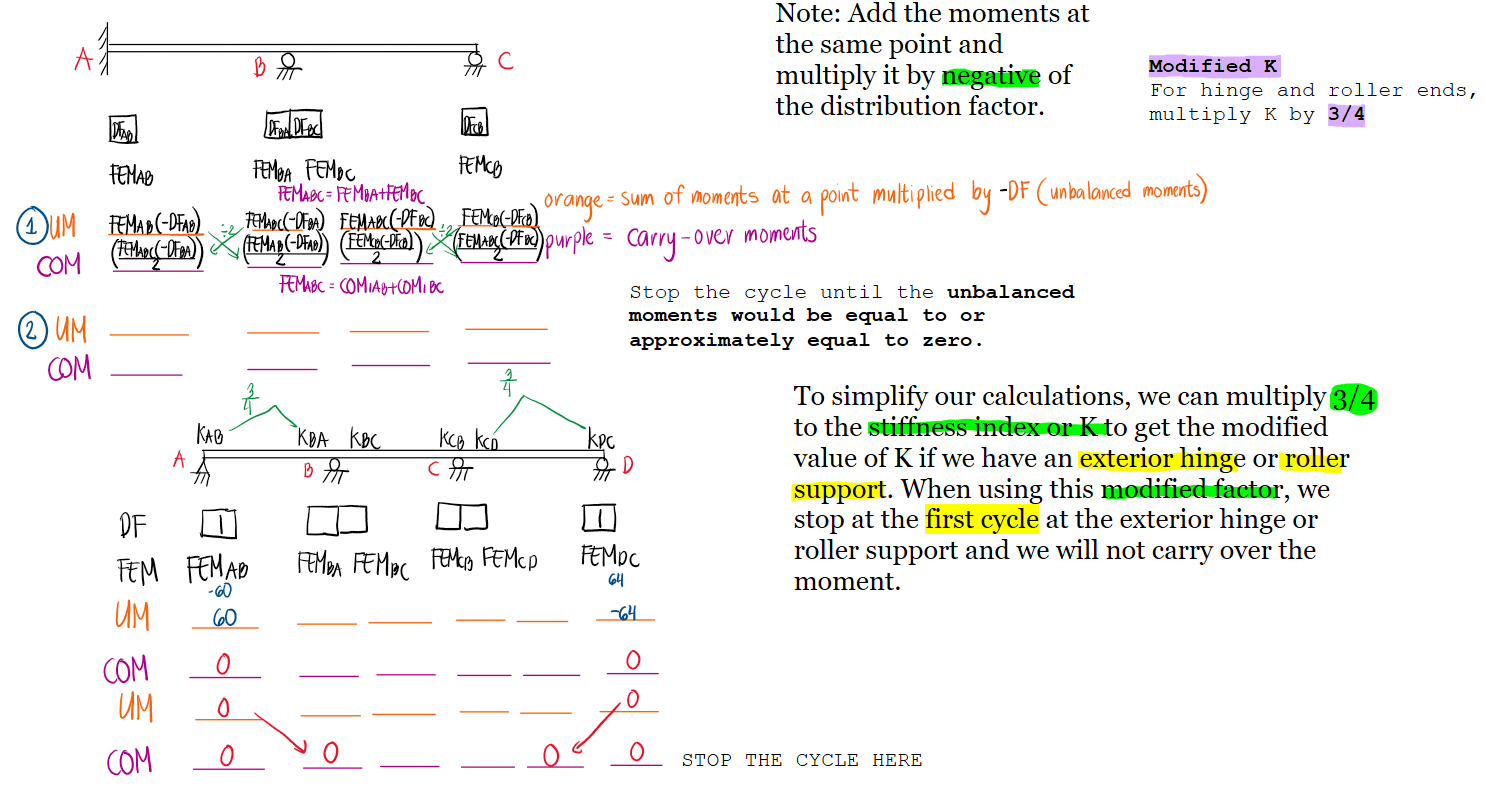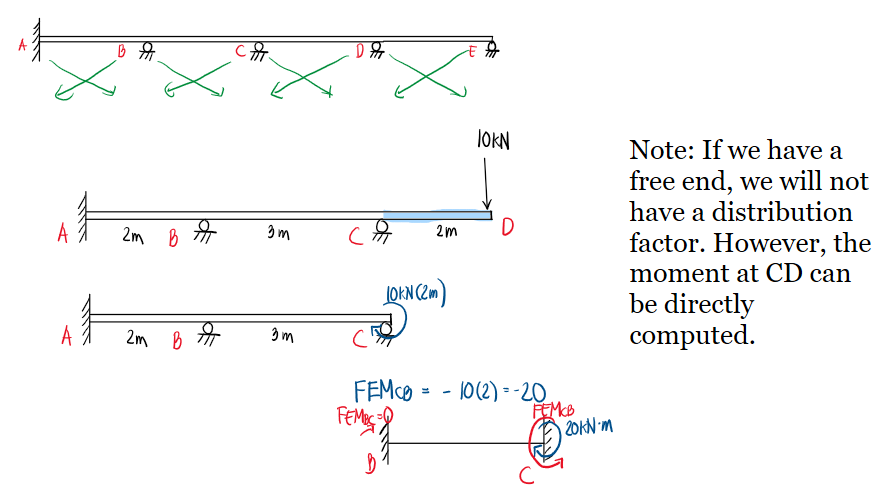The Moment Distribution Method, developed by Hardy Cross, is a powerful technique for analyzing indeterminate beams and frames. It simplifies solving by balancing moments at joints through successive approximations, eliminating the need to solve large systems of equations.

For fixed supports, DF = 0 --> no rotation.
For hinged or roller ends, DF = 1 --> full moment transfer.



If a member terminates at a free end, no moment is distributed from that joint. However, you can compute the end moment directly using:





Calculate the support reactions of the beam shown using the Modified Method and the Adjusted F.E.M. if the support at A sinks by 7mm and the support at B sinks by 12mm. E=12GPa and I=125x107mm4



See images:



The above solution does not use the modified method, but we are showing it to demonstrate how the modified method simplifies the process. Below is the solution using the Modified Method.
The reactions of the beams are also solved below using the calculated end moments.

Calculate the support reactions of the beam shown.



See images:




Calculate the support reactions of the beam shown.



See images:




Calculate the reactions of the frame shown using Moment Distribution Method



See images:




Determine the moments acting at the ends of each member. Assume B is a fixed joint and A and D are pin supported and C is fixed. E=29x103ksi. IABC=700in4 and IBD=1100in4



See images:



